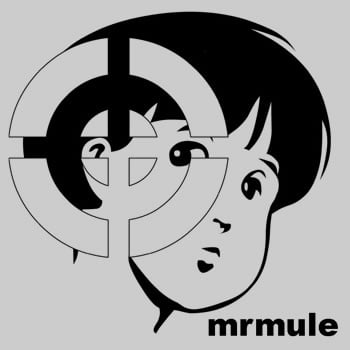I’ve learned about them in school, but I’ve never heard anyone say something is 8 decameters long or anything like that. I’m an American.
They are “technically correct” measurements since they are a valid prefix, and could be used if you wanted. but they are very infrequently used in any industry. Since most of the time measurements are better served by higher precision (just using Meters) or need no precision at all over long distance (switch to kilometers), no need for excess measurement types unless necessary
Bro skips right past centimetres.
Well he asked about deca and hectometers, which are all larger-than meters.
But the same kind of rules apply below the decimal point as above it. We have millimeters (0.001 extreme precision), centimeters (0.01 high precision), and meters (1 low-ish precision). Decimeters (0.1) exist but are rarely used since both meters and centimeters can get the same result. Micro meters and nanometers are also used more frequently, but it becomes industry specific when actually doing things that small.
Centimetres and meters are the two I use the most and see the most used, then kilometres at a close third.
Valid, but rarely used, as it’s usually just as fast to say “two hundred meters” instead of “two hecto meters”.
However, those prefixes have other (non-SI) uses. A hectare is common way of referring to a 100x100 meter area. And a decare is 10 ares, i.e. 0.1 hectare.
Also: hectopascals.
To be fair, once all the boomers are gone we’re probably going to go full kPa.
Meh, who knows. The change from millibars was quite a while ago.
Right, forgot about that one.
No, some measurements just aren’t used, even when they’d be a good fit.
Like lengths. We never use anything above km. Even for things like space, we say “million km” rather than gigametre.
The closest we come to hectometre is hectare, which is used for land area.
I’d say we use every 3 prefixes, nanometerw, micrometers, mm, m, km, than any much higher than that usually uses space units (parsecs, AU, lightyears, etc.)
Megameters are sometimes used, that’s not true.
Who uses megametres? It’s not something I’ve ever heard in the UK.
A megameters is 1.000.000 meters.
Where do you live and what is your profession? I have heard anyone use megameter seriously.
My astrophysicist friend used them sometimes. I knew her in Texas. She’s moved around tho
I can only tell you about how we do it here in the Netherlands, but very rarely.
We have highway location markers (in the form of a little pole and a sign with some markings on them) every hundred meters. Their official name is “afstandspaal” but people generally call them “hectometerpaal” because they denote the distance along a highway in hectometers.
When you hear about traffic jams, speed cameras, or car accidents on the radio, they’ll usually announce highway number and hectometer pole number so drivers know where to look.
The metric tonne (1000kg) is used rather than a megagram even though megagram is more fun to say. This is for historic reasons, mostly. Having Mg (megagrams) and mg (milligrams) next to each other would probably also just confuse people.
Hectares (100x100m, or 10000m²) are used to denote area for things like farms. Centiliters and deciliters are used for very specific purposes (medical and such).
As for general distance: meters and kilometers work fine. Same with grams and kilograms. Smaller measurements like centimeters and millimeters are also common (or milliliters and liters, rarely centiliters but you do see them in some recipes).
Funnily enough, we (although I notice it mostly among older people) do use ons and pond (ounce and pound), although an ons is 100 grams and a pond is 500 grams. Just like with the tonne, we adjusted them to make dealing with SI units easier; we did the same with the mijl (mile) and other units similar to the imperial name as a transition to the normal metric system. Technically speaking, you’re not allowed to sell advertise products by the ons or pond anymore (thanks, IJkwet of 1937) but if you ask anyone at market for a pound if cheese, they’ll know how much to get you.
Lastly, there are a few use cases where the inch is used. Screens are measured in inches for reasons I’m not entirely sure about (probably British and American exports). This leads to some rather silly phone spec sheets, listing width/length/height in centimeters and a screen diagonal in inches. We don’t even use a Dutch word for inch!
We do have a perfectly good word for inch : duim (thumb)
Perhaps, but I’ve never heard anyone say they have a 60 duim TV.
I’m all for some Bond tegen Leenwoorden changes to bring duimen back to the masses, but I don’t think it’s going to happen.
In France “hectare” (10 000m²) is used for fields and burning forest. Beside that deca or hectometers are never used
An hectare is 10.000 m2
And we use hectolitres for wine production
Mb it’s 100m*100m
Hectares are also standard in Australia
Nz too apart from old people who still use acres.
As an American who has gotten very used to metric units in studying engineering, the general rule I picked up is that you typically only change units every three orders of magnitude. So 8 decameters would typically be expressed as 80 meters, maybe 0.08 kilometers. Decameters and hectometers are a thing, but they’re not common units. Even centimeters don’t see much use compared to millimeters.
We usually go for the 3 order rule, but in the case of areas and volumes, for dimensional reasons, dam and hm make it into the three order rule. Dm (or dam) is not common but dam^3 has some uses, the same goes for hm, hm is used for only special situations (like meassuring train distances), but hm^2 is almost globally used for big chunks of land. Also, with hm^2, we always keep the unit, so for example, Parque Nacional Iguazú in Argentina has 67620 hm^2 (also ha or hectarea).
I’m also an engineer and I generally despise imperial units, but I have to say that inchs are pretty handy and the 1 in = 25,4000… mm relation is pretty neat
That might be true for science but in everyday use centimeters, hektograms and the like are more common
for everyday use … hektograms and the like are more common
[citation needed]
From my experience in Norway, these are typical in context of daily speech:
Weight (gram): tonne (a substitute name for Mg (Mega)), kg, hg, g, mg, μg (mostly in medicine)
Distance (meter): mil (10 km), km, m, dm (kinda rare), cm, mm
Volume (liter): l, dl, cl, ml
In my experience, the deca-predix is very rarely used. Most of the missing prefixes are just substituted for numbers, i.e. saying “a thousand kilometers” is much more common that “a megameter”. Of course, this differs depending on context, as a lot of the prefixes become more common within scientific fields where the sizes are common.
On a separate note, even the numbers can be a bit inconsistent. It has bothered me that it’s often common to say “a thousand milliard” instead of “one billion” (also note that we use the long scale).
In Germany Hectoliter is also used to calculate beer volume in commercial settings, like planning for a bar or a festival.
„Kommerziell“
From my experience in Norway, these are typical in context of daily speech: (…) km, m, dm (kinda rare), cm, mm
Don’t forget the Scandinavian mile! You and the Swedes use it all the time.
Not sure how I forgot that! Will edit it in!
μm and nm used in engineering and science fields fairly frequently
in school in austria we teach dezimeter (tenth of a meter)
decimeter is a good measure because one cubic decimeter (1 dm³) equals one liter ( 1L )
*of water
1 cubic decimeter = 1 liter. Period.
No, you’re thinking of a kilogram. A liter and 1dm³ are identical.
Haha obviously, too early in the morning ;)
1dm^3
Ah jeez, thank you. Fixed it.
No, volume dimensions are independent of what a specific volume is filled with.
1 liter of water is 1 cubic decimeter of water just as 1 liter of air is 1 cubic decimeter of air.
I’m a chemistry teacher so I regularly use dm³
Isn’t that just a liter?
Decimeter is used in older American botany books for some reason. Only place I’ve ever seen it
It depends on the situation, sometimes they are really handy but most of the time we stick to kilo, centi and mili.
Where i live, Hecto (100x) is used, for example to measure distances and areas for big properties. 1 hectometro equalls 100 m, or 1 hectarea (hm^2) equals 10000 m^2.
Also, it is widely use for pressure, cause 1 atm is 1013 hPa
Decameters are used but for special situations, like quantifying natural gas consumption
Yes, they are used, but typically in specialized applications which is why you don’t see them every day.
In Romania we use them for measuring areas. An “ar” is 100m^2 or a square decameter, and a hectare is a 10000m^2 or a square hectometer.
In Germany we only use hectare. Ar is something you learn in school and never use.
In Italy we use hectograms (“ettogrammi”, “etti” for short) in day to day life when buying groceries. You don’t ask for 200 grams of ham, you just ask for 2 etti.
In Poland: decimeters are sometimes used (I have been ordering cut sheet metal priced by square decimeters) , I have not seen decameters in use. Hectopascales are often used in weather reports. Decagrams are often used when buying food where these amounts make most sense (meat, candy).
The ‘more exotic’ prefixes are usually only used with some specific SI units and in very specific contexts.
You use decagrams for food? I’ve only ever seen hektograms being used for that
In America, I’ve seen nurses and diabetics use deciliters in reference to medication or concentration before.
Deci is 0.1 and that gets used frequently, deka is 10 and never gets used at all, except in Austria when grocery shopping at the deli counter. 🤷
Hekto is 100 and similarly never gets used, not even by Austrians.
Norwegian here, hekto gets used when buying fresh meat or fish
deleted by creator
Deciliters are not infrequently used in recipes here as well. I’ve never seen decameters or hectometers used by anyone.
Sweden uses decimeters and deciliters
And hectograms. We just shorten it to ”hekto” though. It’s how we buy stuff from the deli. ”2 hekto salami please”.
The silly Austrians would ask for “20 Deka Salami, bitte.” It’s weird.
Sweden is also the only country in the world to have a sensible use of the word ‘miles’ (or ‘mil’ in Swedish):
10km = 1 mil
They use this a lot when speaking of travel distances longer than 20km.
In Canada anything over 20km is referenced as time. “it’s about an hour drive”
Sweden also uses mil for distance, which is 10^4 meters (10 km)

















